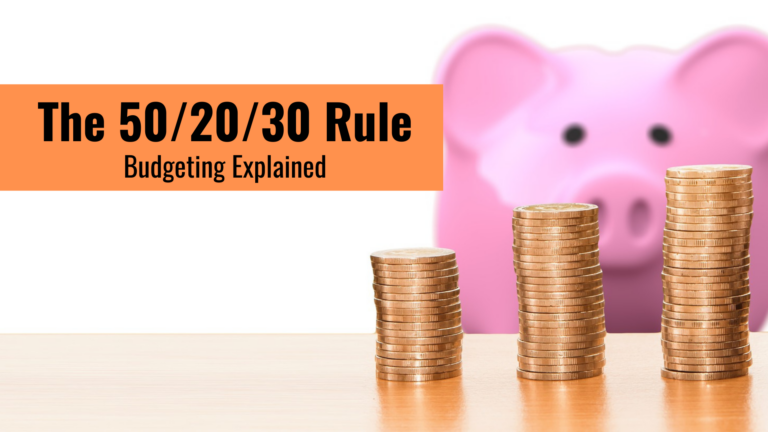The 50/20/30 Rule
Are you ready to start your investing journey but you can’t seem to save up enough money to put into your retirement account?
The first step before investing is actually budgeting so that you have the money necessary to invest. Today, we will be discussing one of the most popular budgeting methods out there: the 50/20/30 rule.
The 50/20/30 rule states that you should use 50 percent of your income for essential expenses, save 20 percent, and use the remaining 30 percent for personal expenditures.
Of course, you can alter the percentages of your spending categories however you wish, but the 50/20/30 rule is a great way to make sure your essential expenses aren’t too big for your income, ensure that you’re saving the generally recommended 20 percent of your income, and still have a good portion of your cash left over to spend on yourself.
So, let’s break down the 50/20/30 rule, starting with the “50!”
The essential expenses portion of your budget will be the toughest part to work with in most cases. This is because your essential expenses are, well, essential! If your essential expenses are adding up to more than 50% of your income, it would take some serious life changes in order to balance your budget.
For example, let’s say you make $3500 a month after taxes. If the rent for your apartment is $1200, your groceries are $300, you spend $200 a month on gas for your commute, your car insurance payment is $200, and your loan payments add up to $300, then your total essential expenses add up to $2200.
That’s 63% of your total income, which is a no-no according to the 50/20/30 rule.
In order to get that number down to 50%, you would have to make some big changes that involve reducing your essential expenses, increasing your income, or both.
For example, you could probably cut your rent in half by downsizing to an older, cheaper apartment or house and bringing in some roommates. You could renegotiate your loans in order to extend the loan term and lower your monthly payment (though this will mean paying a larger total amount over time).
You could even trade your car in for a cheaper one that is more fuel efficient. Instead of lowering your essential expenses, you could also increase your income by taking on a second job, starting a side hustle, or asking for more hours at work.
Obviously, these are all very big decisions that can be very difficult to make. But at the end of the day, your wallet (and your retirement account!) will thank you for making the changes necessary to get your essential expenses down to no more than 50% of your income.
Once you have your essential expenses balanced, you are left with the other 50% of your income to divide up between saving and spending on yourself.
These two spending categories should be much easier to balance as you can make smaller, simpler sacrifices in order to make sure you’re left with enough money to invest and put in the bank.
The 20
When it comes to the 20% of your income you put towards savings, it’s up to you to decide where exactly it goes. It is strongly recommended that you start by establishing an emergency fund.
While it may be tempting to put all of your extra cash into your retirement account so that you can start taking advantage of the benefits of compound interest as early as possible, your investments won’t do you any good if you can’t afford an unexpected car repair or if you lose your job and can’t support yourself until you find a new one.
Ideally, you should have six months of expenses saved up in your emergency fund. After that, feel free to contribute to your 401(k), your Roth IRA, and any other investment accounts you may have.
The 30
Now comes the fun part. You get 30% of your income to spend on yourself! This could be nights out, golf, movies, beauty expenses, video games, or any other nonessential cost that you incur for yourself.
If you’re having trouble keeping your personal expenses below 30% of your income, consider making coffee at home, buying store brand products, or cooking a few nights a week instead of ordering takeout.
Want to learn even more budgeting tips to help you get started? Check out our budgeting article and YouTube video here!
There are many different ways to divide up your income, and each person’s budget should be customized to meet their needs. But if you’re looking for some general budgeting advice, the 50/20/30 rule is a widely used method and a great place to start!
